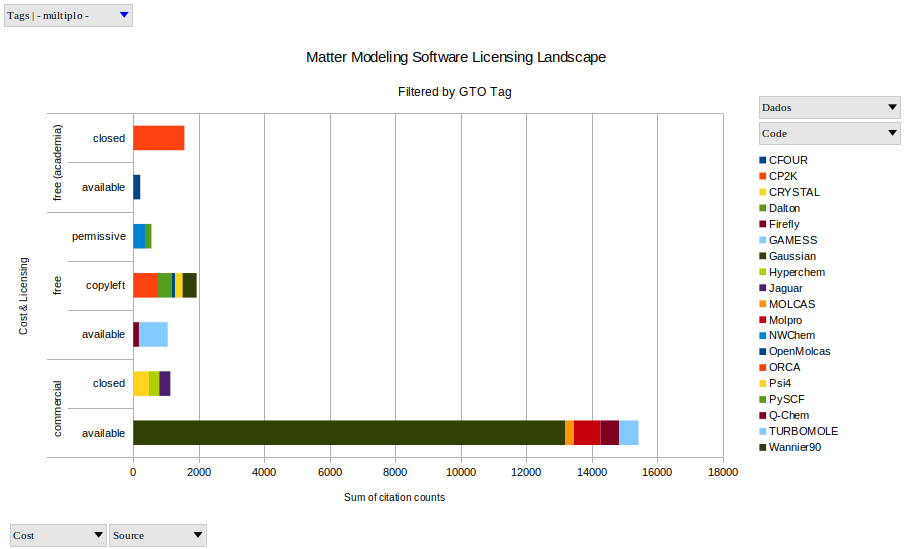Regarding the branch of matter modeling that deals with electronic structure methods, I think we can divide it in two camps: Those who work mostly with planewave-based software, geared towards periodic systems, typical of solid-state physics research; and those working mostly with software based on atom-centered Gaussian type orbitals, geared toward molecular systems, typical of quantum chemistry research. There's a lot of overlap between both camps, but I think people tend to stick mostly with one kind of system, in their research.
Said that, as someone more familiar with systems typical of quantum chemistry, even before having the hard numbers to back it up, I always had the impression my peers at the solid-state physics community were better served in terms of free software / open source tools (and even just "free as in beer" tools), while we were mostly stuck to expensive proprietary tools, the alternatives being much less well known and used. I even felt a bit envious because of this.
Now I noticed this answer to one previous question here: "More matter modeling codes or better codes?", where user @leopold.talirz pointed to a study preprint(1) where they systematically reviewed available matter modeling packages, their citation counts, source availability (either closed, available, copyleft or permissive) and cost (either commercial, free, or free only for academics). Then I actually downloaded the data in their site, to check if my impression about this was right or not. I think it is mostly correct. If we filter by the "PW" tag, for planewave, we get this:
While filtering by "GTO" tag, we get this scenario:
As we see, while both graphs show commercial software with high counts, the one for software with PW tags shows a sizeable fraction of total citation counts associated to noncommercial free / open source codes, specially to the gold standard copyleft licenses. Note the absence of opaque closed source codes. So the software ecosystem here looks healthier. For software with GTO tags, the share of free / open source is much lower.
So I ask, what are the causes for this matter modeling software freedom gap between PW-based codes and GTO-based codes?
References:
(1). Talirz, Leopold, et al. “Trends in atomistic simulation software usage”. arXiv:2108.12350 [cond-mat, physics:physics], agosto de 2021. arXiv.org, http://arxiv.org/abs/2108.12350.

